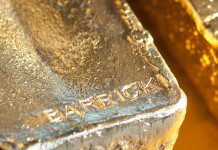
[miningmx.com] — GOLD Fields CEO Nick Holland said he hoped to schedule a meeting with Ollanta Humala soon after the newly elected president of Peru formally takes office, expected to be in July.
“We intend to demonstrate our credentials to Humala,’ said Holland in an interview. He added that he had been “surprised’ by the effect of Peru’s election result on Gold Fields’ share price. “We intend to show the benefits of Cerro Corona to the Peruvian economy,’ he said.
Gold Fields shares fell as much as 6% on news that Humala had seen off rival Keiko Fujimori’s challenge in Peru’s presidential run-off on June 8, and were 7.4% lower so far this month. Gold Fields owns a controlling stake in the Cerro Corona mine which provides 16% of group production.
“I think there was also something of a sell-off in gold shares as well,’ said Holland. “We weren’t the only shares affected.’
The fear presented by Humala’s election in Peru is that he would introduce higher taxes, and possibly a once-off 40% windfall tax in an effort to meet his pre-election manifesto of bringing relief to Peru’s poor, which number a third of the population.
Analysts monitoring the South American country have since commented that Humala, who once launched an armed coup against the state, favours a more conciliatory approach, and would like to model Peru’s economic policies on those of Brazil’s former president, Luiz Inacio Lula da Silva Lula who helped lead Brazil to economic boom from 2002 to 2010. This was after establishing himself as a hard left unionist in the 1980s.
Privately, Gold Fields expects an uplift in taxes payable from Cerro Corona, and another potential mine, the Chucupaca prospect, once developed. However, fears of nationalisation, once the calling card of Humala, are considered highly unlikely.
Geographic mix
Gold Fields is aiming to derive some 20% of total gold production from South America as part of a long-term rebalancing of the group’s geographic exposure. Three years ago, when Holland took over from predecessor, Ian Cockerill, some 65% of Gold Fields’ asset base was located in South Africa, a level that has since been reduced to 50%.
“We would like that to become 40% of total production with a further 20% from west Africa and the balance from Australia,’ Holland said.
This would be achieved by lifting production in other regions as part of Gold Fields’ strategic goal of reaching 5 million ounces of gold production ore in the development phase per year by 2015, Holland said.
Commenting on the group’s approach to South Africa, Holland said investors continued to worry about nationalisation but that the cost hikes posed by Eskom’s proposed 25% per year tariff hike and work stoppages were normally the first questions in meetings. “They also want to know about our project pipeline,’ said Holland.
West Rand gold mine South Deep – considered the last jewel to be delivered up by the famed Witwatersrand Basin – was unfinished work for Holland, who said he wanted to “prove the naysayers wrong’ by having it produce 750,000 oz/year sustainably.
“It would be a tremendous achievement. So many people tell us it can’t be done. But we are starting to get believers, although not fast enough for us,’ Holland said. South Deep produced 275,000 oz in its last financial year, nearly double that of the previous period.










